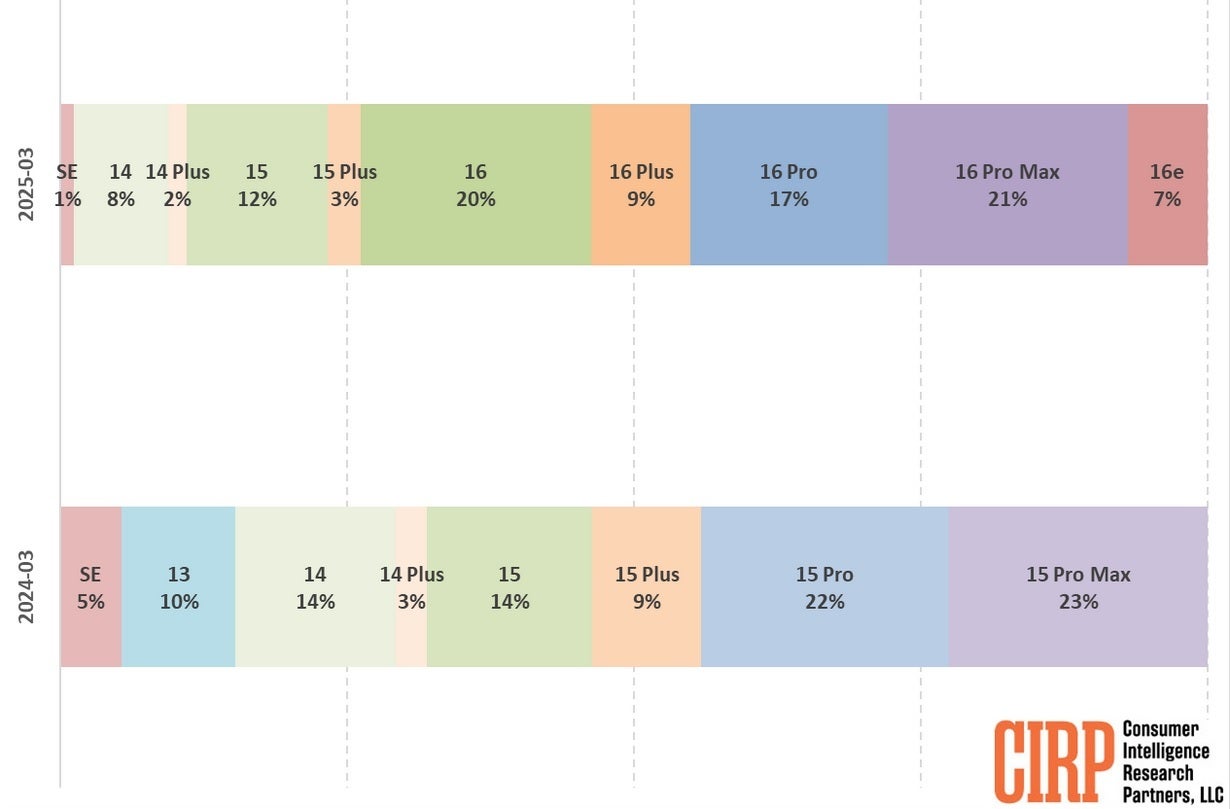The introduction of the iPhone 16e helped improve US sales of lower-priced iPhone models in Q1
On the other hand, unlike the rest of the iPhone 16 family, the iPhone 16e is equipped with Apple’s home-grown C1 modem which does not support the fastest high-band mmWave 5G signals. Not that it really matters because one of the characteristics of high-band frequencies is that they travel short distances which means that you’ll rarely be connected to a mmWave band.

iPhone 16e sales helped US sales of lower-priced iPhones across the board during the first quarter. | Image credit-CIRP
Having its low-priced model join the iPhone 16 line instead of being placed in a special “SE” category has helped boost U.S. sales of lower-priced iPhone models. Based on its survey, CIRP says that even with its partial availability for Q1, the iPhone 16e made up 7% of iPhone U.S. iPhone unit sales during Q1. That was an increase of 40% over the 5% of unit sales attributed to the iPhone SE during last year’s first quarter.
CIRP’s survey shows that the iPhone 16e name might have led US consumers to buy lower-priced models in Q1
Running with the same thought, the base iPhone 16 accounted for 20% of Q1 U.S. in Q1 2026 up 43% from the 14% share captured by the base iPhone 15 model during the same quarter last year. The availability of the iPhone 16e also seemed to reduce legacy iPhone sales (defined as those released over a year ago). This year, legacy models made up 26% of U.S. iPhone sales in Q1 compared to the 32% share won by legacy models in Q1 2024.
Based on this data, it seems that Apple did the right thing by halting the iPhone SE moniker and replacing it with the iPhone 16e name, at least in the U.S. With the iPhone 16e title, Apple might have expanded its iPhone line to five phones adding an even lower priced model to the “left” of the annual base model price-wise.










